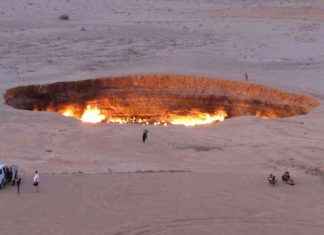If you want to give your novel a clear spine, let a stream run through it. In international literature it is usually the rivers, but we have no rivers in Sweden. Rivers, however. Pia, Mariana Raattamaa Viséns family chronicle unfolds in a village on the Swedish side of the muonio river. The river is the restaurant then the peace of Hamina in 1809. On the other side is Finland.
Raattamaa named genera in the pörte where the chronicle, 1895. The author is almost certainly a much later consequence of the two persons who in the novel is approaching the cabin.
book review: Nina Wähä writes insanely funny if helvetesmörker
coming from the south, on foot, from military service in Luleå. And it is Maija, who, while born in another pörte, to the north. Maija is like the river in this novel: she is the throughout power, and in all cases until 1980. Around her growing family, spreading out, umbärs but sprouting. Raattamaa Viséns novel reminds me of a not-unusual composition that makes it best in the shorter and more immediately comprehensible forms of art, where a society’s development snabbspolas in words or pictures. As in the Dire Straits beautiful attempt to make a Dylan/Springsteenlåt – ”Telegraph road” – or presented by comic artist Robert Crumbs short suite where a landscape picture during the four centuries developed from the untouched nature to the modern small town.
the Cabin in the Saivomuotka built by Israel, the grandfather of john, which is right at the novel’s beginning. He is best known under the name Juhani and led laestadianerna after the founder’s death.
But the novel winds its way through the generation. Pia, Mariana Raattamaa Visén probably get with the vast majority belonging to the Norrbottenskildringens fundamentals. Hunger. Swedish female teachers who hit kids on the knuckles with a ruler when they talk Finnish. Frenologin. Hjortronmyrarna, thaw and timmerflottandet. Possible, inequities, and trade union work. Skogsstrejkerna and the strike of the miners.
book review: Laurent Binets thrillersatir is thrilling, smart and funny
fought by gestalternas resistance. You get the feeling that these characters are drawn wildly protesters into modernity and barely has time to get used to it before it begins to be settled again. It is these two conflicting movements, which makes the novel becomes something more than just a summary of familiar themes. Movements, and silence, striding over the moor and along the river bank.
today, I read in the statistics, the småort that, among other Raattamaas built up, dismantled and is no longer småort. In Saivomuotka lived 37 people in the year 1890, five years before the novel takes off. The year 2010 was the population 57.







